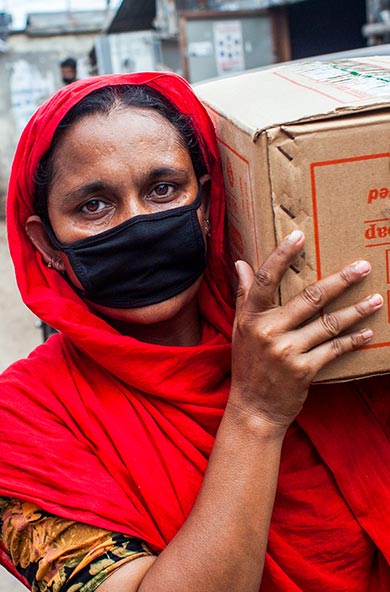Information note on the Executive Board of UNDP, UNFPA and UNOPS
Introduction
The Executive Board of UNDP, UNFPA and UNOPS, comprised of 36 members, was created by General Assembly resolution 48/162 of 20 December 1993. The Executive Board superceded the 48-member Governing Council on 1 January 1994.
The Executive Board is responsible for providing inter-governmental support to and supervision of the activities of UNDP, UNFPA and UNOPS in accordance with the overall policy guidance of the General Assembly and Economic and Social Council, and the responsibilities set out in the United Nations Charter. It must also be responsive to the needs of programme countries. The Board is under the authority of the Economic and Social Council.
Functions (from GA resolution 48/162)
To implement the policies formulated by the General Assembly and the coordination and guidance received from the Economic and Social Council;
- To receive information from and give guidance to the head of each fund or programme on the work of each organization;
- To ensure that the activities and operational strategies of each fund or programme are consistent with the overall policy guidance set forth by the General Assembly and the Economic and Social Council, in accordance with their respective responsibility set out in the United Nations Charter;
- To monitor the performance of the fund or programme;
- To approve programmes, including country programmes, as appropriate;
- To decide on administrative and financial plans and budgets;
- To recommend new initiatives to the Economic and Social Council, and through the Council, to the General Assembly, as necessary;
- To encourage and examine new programme initiatives;
- To submit annual reports to the Economic and Social Council, which could include recommendations, where appropriate, for improvement of field-level coordination.
Membership
Members of the Executive Board are elected by the Economic and Social Council each year for three-year terms, with the exception of the Western European and other States group, which has determined its own internal rotation policy.
The following geographic breakdown of membership was legislated by General Assembly resolution 48/162: 8 from African States, 7 from Asian and Pacific States, 4 from Eastern European States; 5 from Latin America and the Caribbean States; and 12 from Western European and other States.
The Bureau of the Executive Board is comprised of one President and four Vice-Presidents, elected from the members at the first regular session each year, taking into account the need for equitable geographical representation. Since 2001, the Presidency has been held by the following groups:
2001: Latin American and Caribbean States
2002: Western European and other States
2003: African States
2004: Asian and Pacific States
2005: Latin American and Caribbean States
2006: Eastern European States
2007: Western European and other States
2008: African States
2009: Asian and Pacific States
2010: Latin American and Caribbean States
2011: Eastern European States
2012: Western European and other States
2013: African States
2014: Asia-Pacific States
2015: Latin American and Caribbean States
2016: Eastern European States
2017: Western European and other States
2018: African States
2019: Asia-Pacific States
2020: Latin American and Caribbean States
2021: Eastern European States
2022: Western European and other States
2023: African States
2024: Asia-Pacific States
2025: Latin American and Caribbean States
The primary functions of the Bureau are to prepare and organize Board meetings, facilitate transparent decision-making, and promote dialogue in decision-making. The Bureau also agrees on the composition of the teams participating in Executive Board field visits.
Sessions
Since 1994, the Executive Board has held three regular sessions and one annual session each year (decision 94/2). In 2001, the Board agreed that in the future it would hold two regular sessions and one annual session.
Pre-session informal meetings are held two weeks in advance of each session in order to review the agenda and documentation for that session. Other informal briefings and consultations are held on an ad hoc basis throughout the year.
Rules of Procedure
The current Rules of Procedure of the Executive Board were adopted at the first regular session 2011.
Decisions and Working Methods
Decisions of the Executive Board are focused and action-oriented, short and without preambular paragraphs. Since 1994, they have always been adopted by consensus.
Dialogue is the norm in discussion of items before the Board, with avoidance as much as possible of prepared written statements. In May 1996, the Board decided to establish a five-minute limit on oral statements.
Annual workplans are adopted by the Board at the first regular session.
Reports and Documentation
Advance copies of Executive Board documentation are posted on the Executive Board website six weeks in advance of sessions.
Reports of Board sessions are prepared by the Executive Board Secretariat and posted three weeks after each session.

 Locations
Locations

















